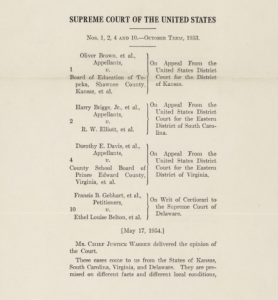Ed Studies Junior Research Plan
Name: Ambar Paulino
Major(s)/Concentration: English/Educational Studies/ African American Studies Minor
Last updated: December 9th, 2013
1) What is your proposed research question, and how is it significant to educational studies, broadly defined?
How has the relocation of the Trinity College campus, from Downtown Hartford to Frog Follow affected families and their children’s education in the Hartford community and surrounding areas? What role has Trinity College played in the development and closing of the achievement gap for Hartford Public Schools?
2) What courses, experiences, and/or readings inspired you to choose this question?
As an Educational Studies major, I was able to take an array of classes which help piece together my concentration which is: “Race, Class, the Achievement Gap and Educational Success.” I am currently taking a class called Race and Urban Space, with Professor Davarian Baldwin which explores the racial implications that decision in city planning lead to. Through my studies in that course I’ve learned that the environment I am living in is not just existent. Months of planning, zoning, and construction go into making cities, and when it comes to urban planning, there are always decisions made.
One of my major assignments for the semester engaged me in my own community. Through the research of my own built environment, I found that my neighborhood underwent a process of transformation with the aide of local prestigious institution- Columbia University. As I delved deeper in my research, I was exposed to all of the changes that were driven by the presence and expansion of Columbia University. As a Trinity College student, I began to think about the relationship that Trinity College posses with the city of Hartford, and what role Trinity has played in the community. Along with your course- Cities, Suburbs, and Schools, I’d like to explore the relationship between the transformation of Hartford due to Trinity’s presence, and also how that has affected (or if it has affected) the public school system and other colleges/universities in the area. For the most part, there are many factors such as real estate, employment, policing, and policy making that may be influenced and or affected by Trinity; I’d like to explore the relationship that our institution has had in the development of Educational policies, creation of magnets schools/open choice schools in the area.
One article that inspired my thinking for this proposal was an article written by Professor Baldwin called, “Phoenix Rising? Arizona State University As An Urban Growth Machine.” This article highlights the effect of the expansion of Arizona State University into the downtown area of Phoenix, a large buzzing city with no real “culture”(Baldwin, 1). Upon reading the article, I thought about the numerous articles I’ve read which label Hartford as one of the most dangerous and or poorest cities in the country. Since my matriculation at Trinity, I have seen very little change in Hartford. However, since the 1970s, there has been a significant amount of change.
In, “Universities and Cities Need to Rethink Their Relationships” author Richard M. Freeland writes:
“ It is useful to distinguish between defensive actions taken to protect our institutions from harm and civic-minded actions that strengthen the community. An initiative to ameliorate urban blight around a campus because such conditions adversely affect admissions is different in spirit than a program to enhance K-12 education by housing a city high school in university facilities and enriching the school’s curriculum” (Freeland, 3).
Parallel to our campus you can find the Learning Corridor which encompasses a variety of smaller sized schools, including the Hartford Magnet Trinity College Academy, a school that is sponsored by Trinity College. To date, I have not heard of other relationships/interactions that Trinity College has besides the one with HMTCA. Through my research, I hope to discover if there were ever other attempts to formulate relationships like the one with HMTCA and if so, how Trinity has supported the schools.
3) What prior methods training do you have, and what primary sources and methods will you use to answer this question?
In order to answer my proposed research question, I intend on using a combination of qualitative and historical research. Next semester I will be taking a course with professor Rachael Barlow named Research Interviewing, which will teach me how to converse with strangers for research purposes. This learning experience will prepare me to interact and properly execute interviews with Hartford Public School Officers, different school administration, faculty and staff from both Trinity College and surrounding primary and secondary schools. Through my historical research, I plan on analyzing the effects of the moving of Trinity’s campus from downtown Hartford to Frog Hollow and the relationship between Trinity and other Hartford Public Schools in the area over a 40 year span.
4) Does your plan include research with human subjects?
My plan does involve research with human subjects through interviews. If there are cases identified where Trinity has been labeled as a beneficial or harmful asset to the community, I plan to identify and meet with the people who have expertise in the subject.
5) Does your research plan require access to a school or organization?
No.
Works Cited
Baldwin, Davarian L. “Phoenix Rising? Arizona State University as an Urban Growth Machine.” Trinity College- Center For Urban and Global Studies: The Urban Planet 6.Fall (2013): 1-2. Oct. 2013. Web. 8 Dec. 2013.
Freeland, Richard M. “Point of View: Universities and Cities Need to Rethink Their Relationships.” The Chronicle of Higher Education 51.36 (2005): B36. Community-wealth.org. 13 May 2005. Web. 6 Dec. 2013. <http://community-wealth.org/_pdfs/news/recent-articles/07-05/article-freeland.pdf>.



